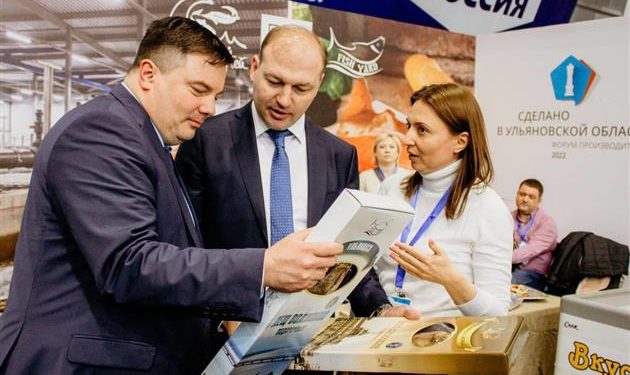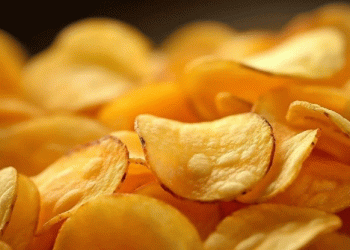The agro-industrial complex of the Ulyanovsk region brings almost half of the funds to the budget. Preparing the project “Agroindustrial complex and food industry of the Ulyanovsk region”, we interviewed Mikhail Semyonkin, Acting Minister of Agro-Industrial Complex and Rural Development of the Ulyanovsk Region.
Photo: provided by the Ministry of Agro-Industrial Complex and Rural Development of the Ulyanovsk Region
- Last year, 1.16 million tons of grain were harvested in the Ulyanovsk region, while the region’s needs were 850,000 tons. What tasks does your department set for farmers this year?
- The Ministry of Agro-Industrial Complex and Rural Development of the Ulyanovsk Region has set the task for farmers to receive a gross harvest not lower than last year’s level. We expect 1525.4 thousand tons of grain.
The Ministry controls the observance of agrotechnological measures in the farms, on which the development of crops and the laying of the future harvest depend.
As part of the activities of the scientific and educational cluster, agricultural producers annually improve the level of education at the “School of the Agronomist”.
- The agro-industrial complex of the region brings almost half of the income to the budget. Last year, industry revenues amounted to 44.8%. What are the plans for the current year?
Field Day 2022 was held in the Ulyanovsk region
Field Day 2022 was held in the Ulyanovsk region
On June 25, about 12,000 residents of the region attended the annual holiday that marks the end of the sowing season. In Zavolzhsky…
— Considering the difficult situation in the economy, which primarily affects the profitability of enterprises and, accordingly, the amount of income tax receipts due to the growth of receipts from other taxes (in particular, personal income tax, in connection with the ongoing work to increase the wages of employees), we calculate according to at the end of the year, to maintain the total volume of tax revenues of the industry to the consolidated regional budget at the level of 2021.
The average salary in agriculture in the region in March 2022 amounted to 33,292 rubles, an increase of 28.3% compared to March last year. In terms of its level, the Ulyanovsk region ranks 7th among 14 regions of the Volga Federal District. Due to the increase in the level of wages in the agro-industrial complex, according to the results of the year, it is predicted to receive an additional 300 million rubles of personal income tax.
In addition, the largest beverage companies presented a forecast for an increase in excise payments to the regional budget by almost 400 million rubles above the 2021 level.
- How successful was the start of the agricultural season – sowing: did you have enough seeds, fertilizers, did the weather let us down? What cultures are preferred and why?
As of June 16, 2022, mineral fertilizers were purchased in full – 101.6 thousand tons or 119.1% of the need. Stocked with ammonium nitrate, ammophos, ammonium sulfate, diammophoska exceeding the plan, urea and azofoska were purchased twice as much as the plan.
For spring sowing in 2022, agricultural producers purchased 105.8 thousand tons of seeds of grain and leguminous crops, which also exceeded the plan. The picture is similar for industrial crops and vegetables.
To date, the spring sowing campaign in the Ulyanovsk region has been fully completed – all the tasks set in terms of sowing volume have been completed.
757 thousand hectares or 102.7% of the planned area of spring sowing were sown. Compared to last year, spring sowing has been increased by 73.5 thousand hectares.
Spring cereals and leguminous crops were sown on an area of 362,000 hectares, or 105.8% of the plan. This area is 6% higher than last year.
Industrial crops have been sown on an area of 344,000 hectares. We have such a strategically important crop as sugar beet under special control. The plan for sowing 10,107 hectares has been completed in full.
Along with sugar beets, we paid much attention to increasing the area under vegetables and potatoes. To date, open ground vegetables in the public sector have been sown on an area of 1,537 hectares, or 102% of the plan. Potatoes are planted on an area of 1450 hectares or 102% of the plan. The area under potatoes is 1.5 times, and under vegetables – 9% higher than last year. Thus, the stores of our regional network will be fully provided with vegetables and potatoes of our own production.
Forage crops were sown on an area of 48.1 thousand hectares, which is 102.6% of the plan.
Agricultural producers have already started processing crops from pests, diseases and weeds. To date, chemical treatment of crops has been carried out on 177 thousand hectares.
The farms are processing fallows for the subsequent sowing of winter crops. 151 thousand hectares – 70% of the plan – have already been processed.
- Agricultural machinery sowing has worked. It is good that domestic agricultural machines make up 82% of the entire fleet of the region. Nevertheless, how will the problem of spare parts for its repair be solved in a situation of destroyed supply chains?
— At the moment, the dealers of the Ulyanovsk region are working out new logistics chains for the supply of spare parts for agricultural machinery through Turkey and China. New directions for the purchase of agricultural machinery and analog spare parts made in China are opening up. The Russian government makes decisions to minimize the damage caused by the sanctions of unfriendly countries (cancellation of duties, subsidizing new supply chains). According to dealers, stocks of spare parts and lubricants for the cleaning company in 2022 are 92%, stocks of spare parts for innovative production are 88%.
— What is the export potential of the regional agro-industrial complex? What problems do exporters face?
— Today, the products of the agro-industrial complex of the Ulyanovsk region are gaining more and more recognition from foreign consumers. We are expanding the geography of deliveries and introducing new companies to foreign markets. And what is important, the growth of exports of Ulyanovsk products is due to the food and processing industry – products with high added value.
This year, whey, nuts and dried fruits, flour, alcoholic beverages, flax seeds, sunflower and rapeseed oils, ice cream, confectionery, and fish products are shipped to foreign markets.
Important trading partners of the Ulyanovsk region are Kazakhstan, Belarus, China, Tajikistan.
To increase the export potential, it is necessary that as many new companies as possible enter the international market. And we are actively helping agro-producers cope with difficulties and overcome barriers, which will lay the foundation for sustainable export growth in the future.
Now we are looking for food industry products to enter alternative markets – to the countries of Central and East Asia, the Middle East, and India.
The main problem of our exporters is the introduction of a number of temporary restrictions that prevent the implementation of export activities for certain commodity items. This is primarily due to the need to ensure the internal food security of the country. The export of grain crops, white sugar, raw cane sugar was banned. However, this situation will change sooner or later. In addition, a non-tariff quota has been introduced for participants in foreign trade activities for the export of sunflower oil and sunflower cake until August 31 of this year.
The main share of exports of agricultural products has always been occupied by grain – more than 60-70%. In the new conditions, we have taken the benchmark for bringing finished products to foreign markets. Today, participants in foreign trade activities are faced with the difficulties of conducting currency banking operations with foreign counterparties. But this is also a temporary problem.
Despite this, we can state with full confidence that the Ulyanovsk region makes a significant contribution to the development of Russian exports. This is facilitated by the federal project “Export of agricultural products”, which will further increase the volume of manufactured products.
The increase in the share of exports will be facilitated by the commissioning this year of 2,059 hectares of reclaimed land, where we grow alfalfa, corn and soybeans.
In search of new sales markets, we work with the Export Support Center, promote the participation of agricultural producers in international exhibitions and fairs.









